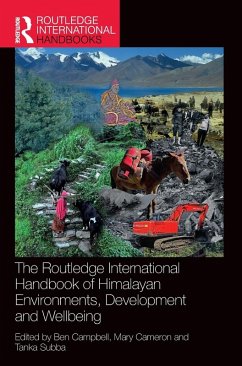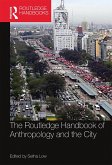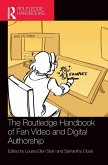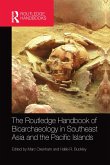The Routledge International Handbook of Himalayan Environments, Development and Wellbeing
Herausgegeben:Campbell, Ben; Cameron, Mary; Subba, Tanka
The Routledge International Handbook of Himalayan Environments, Development and Wellbeing
Herausgegeben:Campbell, Ben; Cameron, Mary; Subba, Tanka
- Gebundenes Buch
- Merkliste
- Auf die Merkliste
- Bewerten Bewerten
- Teilen
- Produkt teilen
- Produkterinnerung
- Produkterinnerung
Shifting dynamics of peoples, livelihoods and territories, influenced by global warming, require new ways of thinking and new kinds of politics beyond the sovereignties of idealized traditional European nation-states. The Routledge International Handbook of Himalayan Environments, Development and Wellbeing features over 70 scholars from the social sciences, humanities and natural sciences who explore the interrelationships between environmental change, development and wellbeing across the entire Himalayan region - from the Indian Himalayas in the east to Bhutan, Nepal, Tibet (TAR), India and…mehr
Andere Kunden interessierten sich auch für
![The Routledge Handbook of Anthropology and the City The Routledge Handbook of Anthropology and the City]() The Routledge Handbook of Anthropology and the City60,99 €
The Routledge Handbook of Anthropology and the City60,99 €![The Routledge International Handbook of Social Work and Disaster Practice The Routledge International Handbook of Social Work and Disaster Practice]() The Routledge International Handbook of Social Work and Disaster Practice264,99 €
The Routledge International Handbook of Social Work and Disaster Practice264,99 €![The Routledge International Handbook of Sociology and Christianity The Routledge International Handbook of Sociology and Christianity]() The Routledge International Handbook of Sociology and Christianity59,99 €
The Routledge International Handbook of Sociology and Christianity59,99 €![The Routledge Handbook of Homelessness The Routledge Handbook of Homelessness]() The Routledge Handbook of Homelessness60,99 €
The Routledge Handbook of Homelessness60,99 €![The Routledge Handbook of Fan Video and Digital Authorship The Routledge Handbook of Fan Video and Digital Authorship]() The Routledge Handbook of Fan Video and Digital Authorship278,99 €
The Routledge Handbook of Fan Video and Digital Authorship278,99 €![The Routledge Dictionary of Anthropologists The Routledge Dictionary of Anthropologists]() Gerald GaillardThe Routledge Dictionary of Anthropologists231,99 €
Gerald GaillardThe Routledge Dictionary of Anthropologists231,99 €![The Routledge Handbook of Bioarchaeology in Southeast Asia and the Pacific Islands The Routledge Handbook of Bioarchaeology in Southeast Asia and the Pacific Islands]() The Routledge Handbook of Bioarchaeology in Southeast Asia and the Pacific Islands61,99 €
The Routledge Handbook of Bioarchaeology in Southeast Asia and the Pacific Islands61,99 €-
-
-
Shifting dynamics of peoples, livelihoods and territories, influenced by global warming, require new ways of thinking and new kinds of politics beyond the sovereignties of idealized traditional European nation-states. The Routledge International Handbook of Himalayan Environments, Development and Wellbeing features over 70 scholars from the social sciences, humanities and natural sciences who explore the interrelationships between environmental change, development and wellbeing across the entire Himalayan region - from the Indian Himalayas in the east to Bhutan, Nepal, Tibet (TAR), India and Gilgit-Baltistan in the west.
Within over 50 chapters, the handbook presents engaging field-based research on the region's socio-cultural diversity, climate adaptation and socio-economic transformation. It examines creative ways Himalayan communities adapt, seek wellbeing and respond to environmental and development challenges. Lessons about learning from Indigenous and local peoples, about governance of forests and water, and grassroots conservation practices from the Himalayan region can help inform global networks of researchers and practitioners.
The handbook will interest scholars, students, stakeholders and the public about the evolving relationships between Himalayan peoples, territories and global warming, offering insights into people's creative ways for understanding, adapting, and seeking wellbeing in environmental relations and development possibilities.
Within over 50 chapters, the handbook presents engaging field-based research on the region's socio-cultural diversity, climate adaptation and socio-economic transformation. It examines creative ways Himalayan communities adapt, seek wellbeing and respond to environmental and development challenges. Lessons about learning from Indigenous and local peoples, about governance of forests and water, and grassroots conservation practices from the Himalayan region can help inform global networks of researchers and practitioners.
The handbook will interest scholars, students, stakeholders and the public about the evolving relationships between Himalayan peoples, territories and global warming, offering insights into people's creative ways for understanding, adapting, and seeking wellbeing in environmental relations and development possibilities.
Produktdetails
- Produktdetails
- Routledge International Handbooks
- Verlag: Taylor & Francis; Routledge
- Seitenzahl: 682
- Erscheinungstermin: 21. Juli 2025
- Englisch
- Abmessung: 250mm x 175mm x 41mm
- Gewicht: 1420g
- ISBN-13: 9781032586403
- ISBN-10: 1032586400
- Artikelnr.: 71632456
- Herstellerkennzeichnung
- Libri GmbH
- Europaallee 1
- 36244 Bad Hersfeld
- gpsr@libri.de
- Routledge International Handbooks
- Verlag: Taylor & Francis; Routledge
- Seitenzahl: 682
- Erscheinungstermin: 21. Juli 2025
- Englisch
- Abmessung: 250mm x 175mm x 41mm
- Gewicht: 1420g
- ISBN-13: 9781032586403
- ISBN-10: 1032586400
- Artikelnr.: 71632456
- Herstellerkennzeichnung
- Libri GmbH
- Europaallee 1
- 36244 Bad Hersfeld
- gpsr@libri.de
Ben Campbell is Senior Lecturer in Anthropology, Durham University, UK. He traveled in 1976 into Himalayan spaces between Kashmir, Nepal and Darjeeling, starting his research career learning Tamang in Nepal in 1988. He directs an MA program on Sustainability, Energy and Development, and his book about the impact of nature conservation on Indigenous environmental knowledge and practice in a Tamang-speaking community is Living Between Juniper and Palm: Nature, Culture and Power in the Himalayas (2013). Mary Cameron is a writer and socio-environmental activist whose research in Nepal explores human-nature engagements, Ayurvedic medicine, and gender and caste. From 1992 to 2021, she was Professor of Anthropology, and directed gender studies programs at Florida Atlantic University and Auburn University, USA. She received three Fulbright grants; alumni, leadership and teaching awards; and numerous other grants. She authored Three Fruits: Nepali Ayurvedic Doctors on Health, Nature, and Social Change (2019) and the award-winning On the Edge of the Auspicious: Gender and Caste in Nepal (1998). Tanka B. Subba is Visiting Professor at the Department of Humanities & Social Sciences, Indian Institute of Technology, Gandhinagar, and Ombudsperson of Darjeeling Hills University. Earlier, from 2012 to 2017, he served as Vice-Chancellor of Sikkim University. He received such awards as the Homi Bhabha Fellowship (Mumbai), Dr. Panchanan Mitra Lectureship and R.P. Chanda Centenary Medal for 2015 (Asiatic Society, Kolkata), DAAD Guest professorship at the Free University of Berlin, and Baden-Wuerttemberg Fellowship at the South Asian Institute, Heidelberg University. He has authored and edited 18 books and published over 80 articles on various issues related to the Eastern Himalayas.
Dedication List of figures List of tables Preface Acknowledgments List of
contributors Acronyms and abbreviations Handbook Introduction Part I:
Environments Introduction: Storytelling Social Ecologies of Change 1.
Forest Change and Human-Forest Interactions in the Himalaya 2. The Role of
Historical Ecology to Assess Risks to Livelihood in the Himalayas from
Climate Warming 3. A Historical Case Study in Women-led Socio-Ecological
Innovation: How Gender and Environment Came to Matter in 15th Century Tibet
(and Now) 4. High-Mountain Farming and Interacting Processes of Change in
Ladakh Over the Last 30-40 Years: the Case of Hemis-Shukpa-Chan 5. Digital
Infrastructures, Practices and Social Agency on the Trail to Everest 6. The
Translocal Sherpa from Everest Mountain Range to Symbolic New York City:
Senses of Belonging and Connecting in Migration 7. Territories for
Protecting a "Pristine Nature": National Parks in the Himalayas, New Places
of Power and Tension 8. Community Conserved Areas in Northeast India and
their Role in Addressing Human-Wildlife Conflict 9. An Environment of One's
Choice: Community, Ecology and Tourism in Arunachal Pradesh 10. Living with
Landslides in Sindhupalchok: Mapping Local Knowledge and Strategies in the
Context of the Federal Decentralizing Era in Nepal 11. Commoning,
Conservation and Mapping in Garo Hills, Northeast India 12. Marrying
Glaciers: Viewing Human-Nature Relationship Through the Lens of Political
Ecology in the Western Himalayas 13. Mi Mayin (Other-Than-Humans) in the
Bhutan Lowlands and Highlands: Agency, Affect, and Annexation 14. Tracing
the Agrarian History of the Sub-Himalayan Forest Frontiers 15. Farming
Systems, Food Security and Contemporary Climate Issues in Nepal 16.
Resilience in Shangri-La 17. Himalayan Connections in Lunana and Limi:
Baselines for Climate Change Perception in Two 'Remote' Communities in
Bhutan and Nepal 18. Climate Change Adaptation in Nepal: Livelihood,
Indigenous and Traditional Knowledge & Practices, and Climate Science 19.
JaDibuti, Plants and Genetic Resources: Conversations among Ayurveda
Practitioners, Conservationists, and Plant Scientists on Traditional
Medical Knowledge and Biodiversity Conservation in Nepal Part II:
Development The Many Faces of Development: An Introduction 20. Development,
Displacement, Rehabilitation and Environment in Northeast India 21. Silent
Dis-possession of Water in Communal Irrigation at the Foothills of the
Himalayas 22. Thulo Maanche: Implications for Development, Equality, and
Democracy in Nepal 23. In-between Mobilities: Risks and Uncertainty in
Labor Migration from Nepal 24. Biogas in Nepal: A Socio-Technical
Perspective of Energy Innovation 25. Kisan Dharma: A Worldview for
Conservation of Natural Resources and Livelihood Security in Nepal 26.
Black Cardamom and Crisis in Hyper Colonial Kalimpong 27. The Assam Bengal
Railways and Socio-Spatial Changes in the Indian Himalayan Region 28. "What
road? I built it myself on my way here": Roads, Wars and the Infrastructure
of Citizenship in the Indian Himalayas 29. Building Capacity, Not
Infrastructure: Lessons from Hydropower Development in Nepal 30. From Yam
to Sponge: Recent Controversies around Nepal's Sovereignty, Territory and
Hydropower 31. Dam(n)ed If You Do, Dam(n)ed If You Don't: Dams, Development
and Contestations in Kinnaur, Western Himalayas 32. Rapid Urbanization and
its Consequences: A Case Study of Bharatpur, Nepal 33. Rethinking the
Himalayan Megaproject: Rainwater Harvesting and the Decentralized
Alternative to Kathmandu's Urban Resource Crunch 34. Modernity, Development
and Waste Management in Northeast India 35. Anthropology of State: Images
and Practices of Inclusive Governance in Nepal 36. Geopolitics over
Development in Pakistan's Karakoram Mountains 37. Gender and Sustainable
Development in the Himalayas: People, Power and Possibilities 38. Women as
Neoliberal Development Subjects: A Feminist Political Ecology Perspective
on Development in Gilgit-Baltistan, Pakistan Part III: Wellbeing
Orientations: Culture, Place and Wellbeings 39. Mental Health Help-Seeking
in the Himalaya: Shifting Ecologies of Care in Post-Earthquake Nepal 40.
Sowa Rigpa and the State in India's Himalayan Borderlands 41. Kyidug:
Pandemic, Food Systems, and Health Ecologies in Dolpo 42. Heterogeneity of
Institutionalizing Sowa Rigpa Education in Nepal Himalaya 43. Ayurveda and
the COVID-19 Pandemic in Nepal 44. Putting People at the Center of
Solutions: Embracing Human-Centered Design for Developing Menstrual Health
Interventions in Nepal 45. Living Homes among the Raji and Raute of Nepal
46. The Truths of Dispossession in the Western Himalaya 47. Global
Population Politics in Nepal: From a "Small, Happy Family" to a "Smart
Life" 48. Addressing Dalit Wellbeing through Counter Ritual 49. Of
Ploughmen and Drummers: Dalit Consciousness in Nepali-Language Literature
50. Food Intake, Activity Patterns and Nutritional Status Among Nepali
Hindu and Buddhist Sherpa Women: A Biocultural Perspective 51. Nettle Stew
and Danger Momos: Himalayan Culinary Innovation from the Diaspora 52.
Toward Holistic Well-being: Gross National Happiness and Alternative
Futures in Bhutan 53. Rethinking Museums in Places of Lived Heritage 54.
Seeking Wellbeing through Song: Dohori Singers' Everyday World-making Index
contributors Acronyms and abbreviations Handbook Introduction Part I:
Environments Introduction: Storytelling Social Ecologies of Change 1.
Forest Change and Human-Forest Interactions in the Himalaya 2. The Role of
Historical Ecology to Assess Risks to Livelihood in the Himalayas from
Climate Warming 3. A Historical Case Study in Women-led Socio-Ecological
Innovation: How Gender and Environment Came to Matter in 15th Century Tibet
(and Now) 4. High-Mountain Farming and Interacting Processes of Change in
Ladakh Over the Last 30-40 Years: the Case of Hemis-Shukpa-Chan 5. Digital
Infrastructures, Practices and Social Agency on the Trail to Everest 6. The
Translocal Sherpa from Everest Mountain Range to Symbolic New York City:
Senses of Belonging and Connecting in Migration 7. Territories for
Protecting a "Pristine Nature": National Parks in the Himalayas, New Places
of Power and Tension 8. Community Conserved Areas in Northeast India and
their Role in Addressing Human-Wildlife Conflict 9. An Environment of One's
Choice: Community, Ecology and Tourism in Arunachal Pradesh 10. Living with
Landslides in Sindhupalchok: Mapping Local Knowledge and Strategies in the
Context of the Federal Decentralizing Era in Nepal 11. Commoning,
Conservation and Mapping in Garo Hills, Northeast India 12. Marrying
Glaciers: Viewing Human-Nature Relationship Through the Lens of Political
Ecology in the Western Himalayas 13. Mi Mayin (Other-Than-Humans) in the
Bhutan Lowlands and Highlands: Agency, Affect, and Annexation 14. Tracing
the Agrarian History of the Sub-Himalayan Forest Frontiers 15. Farming
Systems, Food Security and Contemporary Climate Issues in Nepal 16.
Resilience in Shangri-La 17. Himalayan Connections in Lunana and Limi:
Baselines for Climate Change Perception in Two 'Remote' Communities in
Bhutan and Nepal 18. Climate Change Adaptation in Nepal: Livelihood,
Indigenous and Traditional Knowledge & Practices, and Climate Science 19.
JaDibuti, Plants and Genetic Resources: Conversations among Ayurveda
Practitioners, Conservationists, and Plant Scientists on Traditional
Medical Knowledge and Biodiversity Conservation in Nepal Part II:
Development The Many Faces of Development: An Introduction 20. Development,
Displacement, Rehabilitation and Environment in Northeast India 21. Silent
Dis-possession of Water in Communal Irrigation at the Foothills of the
Himalayas 22. Thulo Maanche: Implications for Development, Equality, and
Democracy in Nepal 23. In-between Mobilities: Risks and Uncertainty in
Labor Migration from Nepal 24. Biogas in Nepal: A Socio-Technical
Perspective of Energy Innovation 25. Kisan Dharma: A Worldview for
Conservation of Natural Resources and Livelihood Security in Nepal 26.
Black Cardamom and Crisis in Hyper Colonial Kalimpong 27. The Assam Bengal
Railways and Socio-Spatial Changes in the Indian Himalayan Region 28. "What
road? I built it myself on my way here": Roads, Wars and the Infrastructure
of Citizenship in the Indian Himalayas 29. Building Capacity, Not
Infrastructure: Lessons from Hydropower Development in Nepal 30. From Yam
to Sponge: Recent Controversies around Nepal's Sovereignty, Territory and
Hydropower 31. Dam(n)ed If You Do, Dam(n)ed If You Don't: Dams, Development
and Contestations in Kinnaur, Western Himalayas 32. Rapid Urbanization and
its Consequences: A Case Study of Bharatpur, Nepal 33. Rethinking the
Himalayan Megaproject: Rainwater Harvesting and the Decentralized
Alternative to Kathmandu's Urban Resource Crunch 34. Modernity, Development
and Waste Management in Northeast India 35. Anthropology of State: Images
and Practices of Inclusive Governance in Nepal 36. Geopolitics over
Development in Pakistan's Karakoram Mountains 37. Gender and Sustainable
Development in the Himalayas: People, Power and Possibilities 38. Women as
Neoliberal Development Subjects: A Feminist Political Ecology Perspective
on Development in Gilgit-Baltistan, Pakistan Part III: Wellbeing
Orientations: Culture, Place and Wellbeings 39. Mental Health Help-Seeking
in the Himalaya: Shifting Ecologies of Care in Post-Earthquake Nepal 40.
Sowa Rigpa and the State in India's Himalayan Borderlands 41. Kyidug:
Pandemic, Food Systems, and Health Ecologies in Dolpo 42. Heterogeneity of
Institutionalizing Sowa Rigpa Education in Nepal Himalaya 43. Ayurveda and
the COVID-19 Pandemic in Nepal 44. Putting People at the Center of
Solutions: Embracing Human-Centered Design for Developing Menstrual Health
Interventions in Nepal 45. Living Homes among the Raji and Raute of Nepal
46. The Truths of Dispossession in the Western Himalaya 47. Global
Population Politics in Nepal: From a "Small, Happy Family" to a "Smart
Life" 48. Addressing Dalit Wellbeing through Counter Ritual 49. Of
Ploughmen and Drummers: Dalit Consciousness in Nepali-Language Literature
50. Food Intake, Activity Patterns and Nutritional Status Among Nepali
Hindu and Buddhist Sherpa Women: A Biocultural Perspective 51. Nettle Stew
and Danger Momos: Himalayan Culinary Innovation from the Diaspora 52.
Toward Holistic Well-being: Gross National Happiness and Alternative
Futures in Bhutan 53. Rethinking Museums in Places of Lived Heritage 54.
Seeking Wellbeing through Song: Dohori Singers' Everyday World-making Index
Dedication List of figures List of tables Preface Acknowledgments List of
contributors Acronyms and abbreviations Handbook Introduction Part I:
Environments Introduction: Storytelling Social Ecologies of Change 1.
Forest Change and Human-Forest Interactions in the Himalaya 2. The Role of
Historical Ecology to Assess Risks to Livelihood in the Himalayas from
Climate Warming 3. A Historical Case Study in Women-led Socio-Ecological
Innovation: How Gender and Environment Came to Matter in 15th Century Tibet
(and Now) 4. High-Mountain Farming and Interacting Processes of Change in
Ladakh Over the Last 30-40 Years: the Case of Hemis-Shukpa-Chan 5. Digital
Infrastructures, Practices and Social Agency on the Trail to Everest 6. The
Translocal Sherpa from Everest Mountain Range to Symbolic New York City:
Senses of Belonging and Connecting in Migration 7. Territories for
Protecting a "Pristine Nature": National Parks in the Himalayas, New Places
of Power and Tension 8. Community Conserved Areas in Northeast India and
their Role in Addressing Human-Wildlife Conflict 9. An Environment of One's
Choice: Community, Ecology and Tourism in Arunachal Pradesh 10. Living with
Landslides in Sindhupalchok: Mapping Local Knowledge and Strategies in the
Context of the Federal Decentralizing Era in Nepal 11. Commoning,
Conservation and Mapping in Garo Hills, Northeast India 12. Marrying
Glaciers: Viewing Human-Nature Relationship Through the Lens of Political
Ecology in the Western Himalayas 13. Mi Mayin (Other-Than-Humans) in the
Bhutan Lowlands and Highlands: Agency, Affect, and Annexation 14. Tracing
the Agrarian History of the Sub-Himalayan Forest Frontiers 15. Farming
Systems, Food Security and Contemporary Climate Issues in Nepal 16.
Resilience in Shangri-La 17. Himalayan Connections in Lunana and Limi:
Baselines for Climate Change Perception in Two 'Remote' Communities in
Bhutan and Nepal 18. Climate Change Adaptation in Nepal: Livelihood,
Indigenous and Traditional Knowledge & Practices, and Climate Science 19.
JaDibuti, Plants and Genetic Resources: Conversations among Ayurveda
Practitioners, Conservationists, and Plant Scientists on Traditional
Medical Knowledge and Biodiversity Conservation in Nepal Part II:
Development The Many Faces of Development: An Introduction 20. Development,
Displacement, Rehabilitation and Environment in Northeast India 21. Silent
Dis-possession of Water in Communal Irrigation at the Foothills of the
Himalayas 22. Thulo Maanche: Implications for Development, Equality, and
Democracy in Nepal 23. In-between Mobilities: Risks and Uncertainty in
Labor Migration from Nepal 24. Biogas in Nepal: A Socio-Technical
Perspective of Energy Innovation 25. Kisan Dharma: A Worldview for
Conservation of Natural Resources and Livelihood Security in Nepal 26.
Black Cardamom and Crisis in Hyper Colonial Kalimpong 27. The Assam Bengal
Railways and Socio-Spatial Changes in the Indian Himalayan Region 28. "What
road? I built it myself on my way here": Roads, Wars and the Infrastructure
of Citizenship in the Indian Himalayas 29. Building Capacity, Not
Infrastructure: Lessons from Hydropower Development in Nepal 30. From Yam
to Sponge: Recent Controversies around Nepal's Sovereignty, Territory and
Hydropower 31. Dam(n)ed If You Do, Dam(n)ed If You Don't: Dams, Development
and Contestations in Kinnaur, Western Himalayas 32. Rapid Urbanization and
its Consequences: A Case Study of Bharatpur, Nepal 33. Rethinking the
Himalayan Megaproject: Rainwater Harvesting and the Decentralized
Alternative to Kathmandu's Urban Resource Crunch 34. Modernity, Development
and Waste Management in Northeast India 35. Anthropology of State: Images
and Practices of Inclusive Governance in Nepal 36. Geopolitics over
Development in Pakistan's Karakoram Mountains 37. Gender and Sustainable
Development in the Himalayas: People, Power and Possibilities 38. Women as
Neoliberal Development Subjects: A Feminist Political Ecology Perspective
on Development in Gilgit-Baltistan, Pakistan Part III: Wellbeing
Orientations: Culture, Place and Wellbeings 39. Mental Health Help-Seeking
in the Himalaya: Shifting Ecologies of Care in Post-Earthquake Nepal 40.
Sowa Rigpa and the State in India's Himalayan Borderlands 41. Kyidug:
Pandemic, Food Systems, and Health Ecologies in Dolpo 42. Heterogeneity of
Institutionalizing Sowa Rigpa Education in Nepal Himalaya 43. Ayurveda and
the COVID-19 Pandemic in Nepal 44. Putting People at the Center of
Solutions: Embracing Human-Centered Design for Developing Menstrual Health
Interventions in Nepal 45. Living Homes among the Raji and Raute of Nepal
46. The Truths of Dispossession in the Western Himalaya 47. Global
Population Politics in Nepal: From a "Small, Happy Family" to a "Smart
Life" 48. Addressing Dalit Wellbeing through Counter Ritual 49. Of
Ploughmen and Drummers: Dalit Consciousness in Nepali-Language Literature
50. Food Intake, Activity Patterns and Nutritional Status Among Nepali
Hindu and Buddhist Sherpa Women: A Biocultural Perspective 51. Nettle Stew
and Danger Momos: Himalayan Culinary Innovation from the Diaspora 52.
Toward Holistic Well-being: Gross National Happiness and Alternative
Futures in Bhutan 53. Rethinking Museums in Places of Lived Heritage 54.
Seeking Wellbeing through Song: Dohori Singers' Everyday World-making Index
contributors Acronyms and abbreviations Handbook Introduction Part I:
Environments Introduction: Storytelling Social Ecologies of Change 1.
Forest Change and Human-Forest Interactions in the Himalaya 2. The Role of
Historical Ecology to Assess Risks to Livelihood in the Himalayas from
Climate Warming 3. A Historical Case Study in Women-led Socio-Ecological
Innovation: How Gender and Environment Came to Matter in 15th Century Tibet
(and Now) 4. High-Mountain Farming and Interacting Processes of Change in
Ladakh Over the Last 30-40 Years: the Case of Hemis-Shukpa-Chan 5. Digital
Infrastructures, Practices and Social Agency on the Trail to Everest 6. The
Translocal Sherpa from Everest Mountain Range to Symbolic New York City:
Senses of Belonging and Connecting in Migration 7. Territories for
Protecting a "Pristine Nature": National Parks in the Himalayas, New Places
of Power and Tension 8. Community Conserved Areas in Northeast India and
their Role in Addressing Human-Wildlife Conflict 9. An Environment of One's
Choice: Community, Ecology and Tourism in Arunachal Pradesh 10. Living with
Landslides in Sindhupalchok: Mapping Local Knowledge and Strategies in the
Context of the Federal Decentralizing Era in Nepal 11. Commoning,
Conservation and Mapping in Garo Hills, Northeast India 12. Marrying
Glaciers: Viewing Human-Nature Relationship Through the Lens of Political
Ecology in the Western Himalayas 13. Mi Mayin (Other-Than-Humans) in the
Bhutan Lowlands and Highlands: Agency, Affect, and Annexation 14. Tracing
the Agrarian History of the Sub-Himalayan Forest Frontiers 15. Farming
Systems, Food Security and Contemporary Climate Issues in Nepal 16.
Resilience in Shangri-La 17. Himalayan Connections in Lunana and Limi:
Baselines for Climate Change Perception in Two 'Remote' Communities in
Bhutan and Nepal 18. Climate Change Adaptation in Nepal: Livelihood,
Indigenous and Traditional Knowledge & Practices, and Climate Science 19.
JaDibuti, Plants and Genetic Resources: Conversations among Ayurveda
Practitioners, Conservationists, and Plant Scientists on Traditional
Medical Knowledge and Biodiversity Conservation in Nepal Part II:
Development The Many Faces of Development: An Introduction 20. Development,
Displacement, Rehabilitation and Environment in Northeast India 21. Silent
Dis-possession of Water in Communal Irrigation at the Foothills of the
Himalayas 22. Thulo Maanche: Implications for Development, Equality, and
Democracy in Nepal 23. In-between Mobilities: Risks and Uncertainty in
Labor Migration from Nepal 24. Biogas in Nepal: A Socio-Technical
Perspective of Energy Innovation 25. Kisan Dharma: A Worldview for
Conservation of Natural Resources and Livelihood Security in Nepal 26.
Black Cardamom and Crisis in Hyper Colonial Kalimpong 27. The Assam Bengal
Railways and Socio-Spatial Changes in the Indian Himalayan Region 28. "What
road? I built it myself on my way here": Roads, Wars and the Infrastructure
of Citizenship in the Indian Himalayas 29. Building Capacity, Not
Infrastructure: Lessons from Hydropower Development in Nepal 30. From Yam
to Sponge: Recent Controversies around Nepal's Sovereignty, Territory and
Hydropower 31. Dam(n)ed If You Do, Dam(n)ed If You Don't: Dams, Development
and Contestations in Kinnaur, Western Himalayas 32. Rapid Urbanization and
its Consequences: A Case Study of Bharatpur, Nepal 33. Rethinking the
Himalayan Megaproject: Rainwater Harvesting and the Decentralized
Alternative to Kathmandu's Urban Resource Crunch 34. Modernity, Development
and Waste Management in Northeast India 35. Anthropology of State: Images
and Practices of Inclusive Governance in Nepal 36. Geopolitics over
Development in Pakistan's Karakoram Mountains 37. Gender and Sustainable
Development in the Himalayas: People, Power and Possibilities 38. Women as
Neoliberal Development Subjects: A Feminist Political Ecology Perspective
on Development in Gilgit-Baltistan, Pakistan Part III: Wellbeing
Orientations: Culture, Place and Wellbeings 39. Mental Health Help-Seeking
in the Himalaya: Shifting Ecologies of Care in Post-Earthquake Nepal 40.
Sowa Rigpa and the State in India's Himalayan Borderlands 41. Kyidug:
Pandemic, Food Systems, and Health Ecologies in Dolpo 42. Heterogeneity of
Institutionalizing Sowa Rigpa Education in Nepal Himalaya 43. Ayurveda and
the COVID-19 Pandemic in Nepal 44. Putting People at the Center of
Solutions: Embracing Human-Centered Design for Developing Menstrual Health
Interventions in Nepal 45. Living Homes among the Raji and Raute of Nepal
46. The Truths of Dispossession in the Western Himalaya 47. Global
Population Politics in Nepal: From a "Small, Happy Family" to a "Smart
Life" 48. Addressing Dalit Wellbeing through Counter Ritual 49. Of
Ploughmen and Drummers: Dalit Consciousness in Nepali-Language Literature
50. Food Intake, Activity Patterns and Nutritional Status Among Nepali
Hindu and Buddhist Sherpa Women: A Biocultural Perspective 51. Nettle Stew
and Danger Momos: Himalayan Culinary Innovation from the Diaspora 52.
Toward Holistic Well-being: Gross National Happiness and Alternative
Futures in Bhutan 53. Rethinking Museums in Places of Lived Heritage 54.
Seeking Wellbeing through Song: Dohori Singers' Everyday World-making Index








